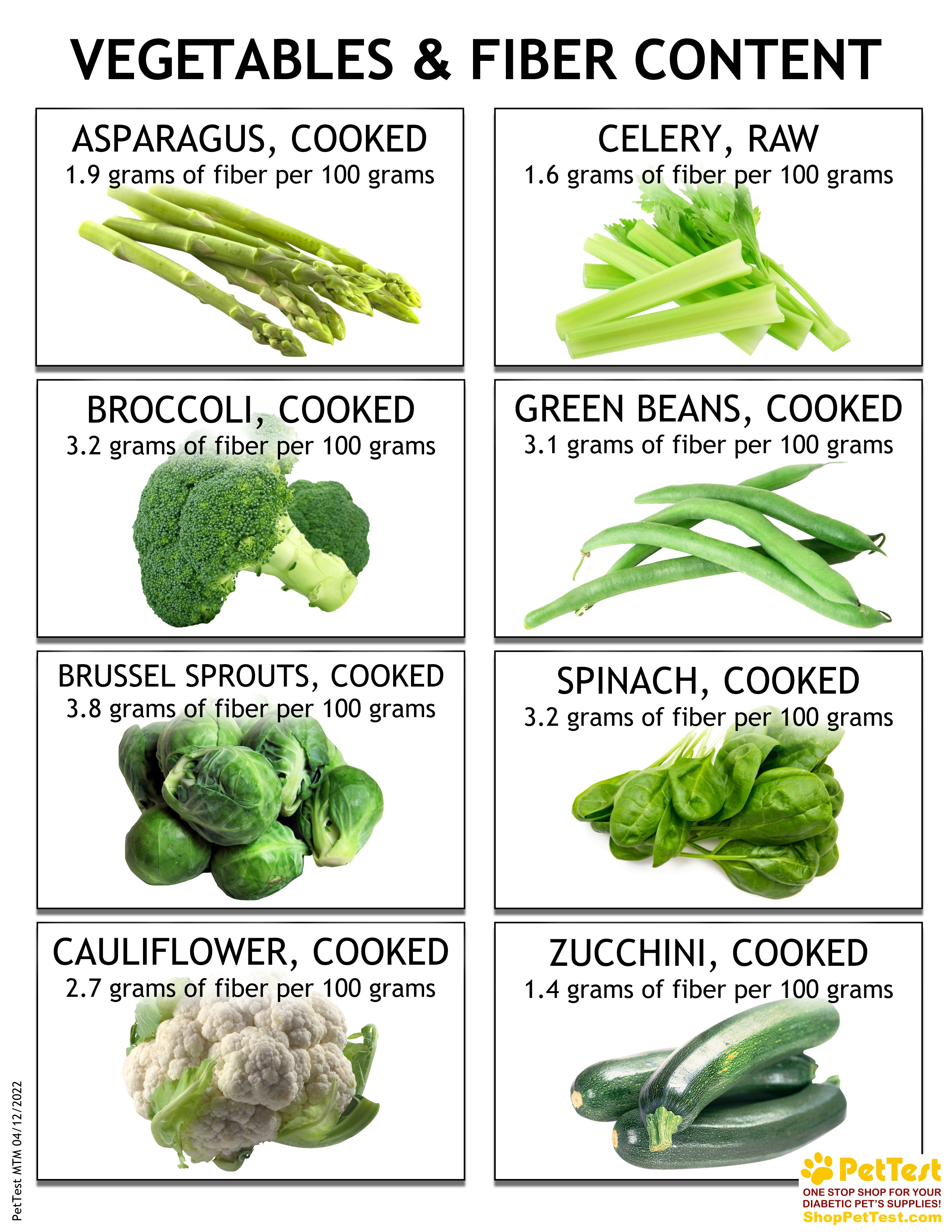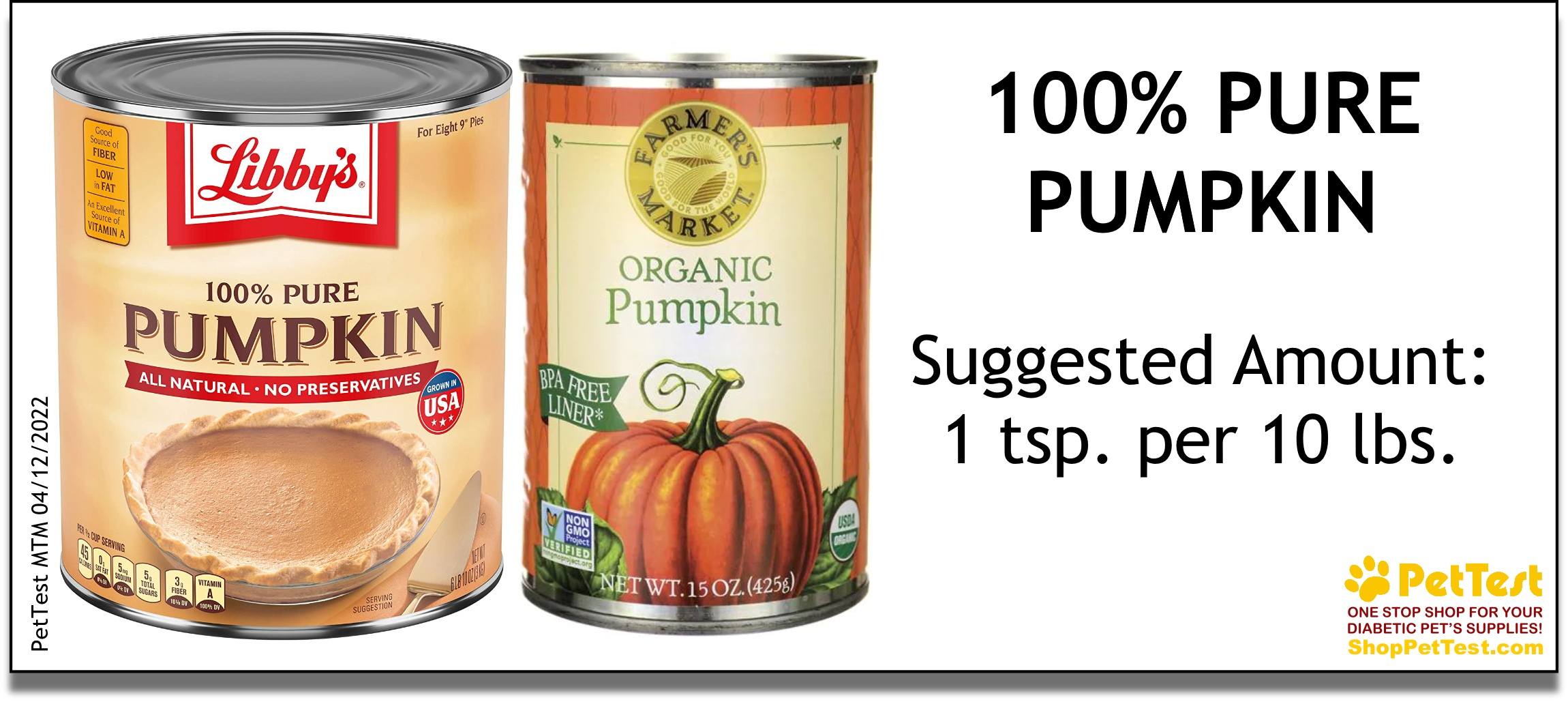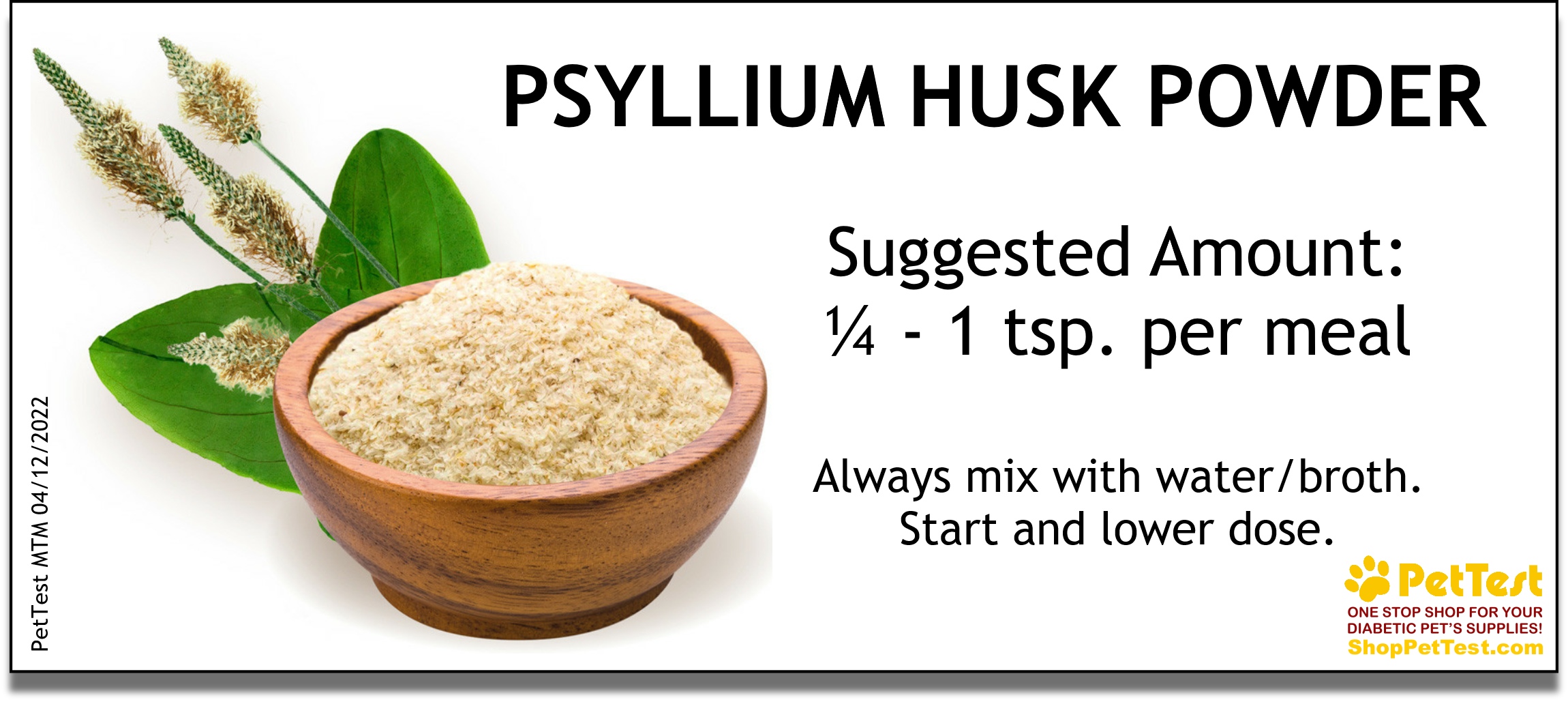When Lucy was first diagnosed with diabetes and pancreatitis I immediately switched her to a prescription food that was high in fiber and low in fat. Some of the prescription diets that vets recommend for diabetic dogs is high in fiber. Lucy pooped multiple times per day and they were very dry (I called them sawdust poops). I ended up switching her food for a couple reasons and one was due to the number of times per day she had to use the bathroom. Once I got her food switched to a lower fiber food and added my own fiber she did much better, her stools were perfect and she did not poop an excessive amount. This is why fiber is important in the diet of diabetic dogs.
Too much fiber or not enough fiber can be a problem so let’s talk about fiber today! Grab a cup of your favorite caffeinated beverage and let’s get to it.
What is fiber?
Fiber is only found in plants: vegetables, grains, nuts, seed, fruits and legumes. There are two types of fiber, soluble and insoluble fiber. Both are necessary so let’s look at what they do.
Soluble fiber – once moisture is added to soluble fiber for dogs, it becomes a gel substance. Soluble fiber then coats starches (carbs) and fats. Soluble fiber slows down the absorption of starches and fat. It can also reduce the amount of fats that are absorbed; this is helpful for dogs that have high cholesterol and/or high triglycerides.
Insoluble fiber – this type of fiber is not digested or absorbed by the body. Insoluble fiber helps dogs feel fuller longer, it absorbs moisture and sticks to the byproducts of digestion. Insoluble fiber helps the body process waste and improves bowel health. It can also help with constipation and anal gland expression.
Sources of fiber
If you look at dog food ingredients you will often see the following ingredients added to the food:
- Beet pulp – soluble and insoluble fiber
- Flaxseed – soluble and insoluble fiber
- Cellulose – insoluble fiber
These are all commonly added to commercial dog food and is a source of fiber. The average amount of insoluble fiber a dog should have is 2 – 4% but weight management foods can be much higher in fiber.
For example: Hill's Science Diet WD is a multi-benefit food and is prescribed to overweight dogs and diabetic dogs due to the high fiber content. Per Hill’s Science Diet website total dietary fiber is 27.6% on a dry matter basis.
Nonprescription dog foods have much less fiber. For instance: Wellness Core Reduced Fat dry food is 9.44% fiber on a dry matter basis.
So how do you add fiber to your dog’s diet? Vegetables are a great source of both soluble and insoluble fiber, which is so important for diabetic dogs. Here is a list of fiber content for vegetables I suggest for diabetic dogs, they are typically added to meals but you can give these veggies throughout the day as snacks.
Pumpkin is another high-fiber food for dogs with diabetes. Make sure you purchase 100% pure pumpkin, not pumpkin pie filling. If you have fresh pumpkin make sure you cook it first, consuming raw pumpkin can cause diarrhea. Canned pure pumpkin has 2.8 grams of fiber for every 100 grams of pumpkin.
My favorite form of fiber is psyllium husk powder. It has no sugars added, is easy to give and a great source of soluble and insoluble fiber. 1 tsp of psyllium husk powder has 2.33 grams of fiber; 70% is soluble fiber and 30% is insoluble fiber. This is a terrific addition to a diabetic dog’s diet due to the soluble fiber. Just add a bit of water or broth a minute or so before feeding your dog, this helps the psyllium husk powder gel up.
Suggested dose is 1/4 tsp – 1 tsp per meal. Make sure you start out on a low dose and work your way up to full dose. Hannah my nondiabetic who has anal gland issues is 19 lbs. and gets a heaping 1/4 tsp per meal. I started with 1/8 tsp and worked my way up to 1/4 tsp. We have a much less booty scooting dog!
Why I don’t suggest fiber drink additives
Most of these drinks additives like Metamucil have added sugars or artificial sweeteners. Sugars spike blood glucose levels and the artificial sweetener xylitol is extremely toxic to dogs. Some other artificial sweeteners can cause diarrhea and GI upset in dogs. If you are going to give your dog a human grade fiber supplement like psyllium husk powder, please read active and inactive ingredients!
Too much fiber and not enough fiber
Not enough fiber can cause diarrhea, constipation and your dog may have a harder time expressing his or her anal glands. Firm stools = more pressure.
Too much fiber can cause bloating, gas and constipation.
Adding the correct amount of fiber to your dog’s diet can take some time so be patient. I am in the process of adding more fiber to Hannah’s diet now.
Fiber can impede the absorption of certain oral medications so speak with your vet before adding fiber to your dog’s diet.
Reach out today to find out more about why fiber is important in diabetic dogs’ diet! We can also provide additional information on feeding your diabetic dog.
I hope today’s blog was insightful and will help you and your sweet pup!
Until next week stay comfy and caffeinated!
If you have any questions, comments or suggestions, please start a conversation below.
If you are looking for a Facebook community to join for support, I have proudly been an admin in Diabetic Dog Owners for over five years. You can also join Canine Diabetes Support and Information on Facebook as well.
Be sure to join the PetTest family on Facebook and Instagram. PetTest has fun, interactive posts AND they have fabulous giveaways every week!
Do you need a blood glucose meter kit for your diabetes arsenal? Click here to purchase one today!
For a printable version of this blog click here.




